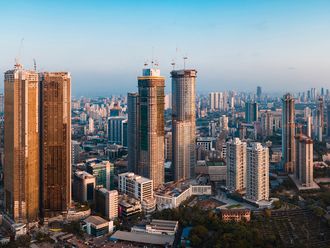
Dubai: Dubai is considering a plan to rework its Rental Index to be linked to individual buildings rather than trends within a neighbourhood or district. It is still in the proposal stage, but if implemented would give greater transparency on how rates are set. It will also become the landlord/building owner’s responsibility to make sure his rental demands are warranted.
"For too long, rent increases or demands have been about the area that particular property or building is in," said a senior source in the industry. "With the plan that's being worked out, Dubai's new Rental Index will be based on the age, quality, other facilities within that building. So, if there are 50 towers in a particular district, rent changes will be based on each tower rather than what's happening with demand and supply in that area."
Interestingly, this revised plan applies to apartment blocks rather than villas. It's not clear whether a new index will be worked out for villas.
A change, if given the go ahead, will come at a time when rents in Dubai have recorded 15-25 per cent increases in most neighbourhoods. Locations such as the Palm, Downtown and Dubai Marina have seen increases even higher than the average.
Whatever be the case the plan represents the biggest makeover for the Dubai Rental Index, and will ensure rental demands are transparently worked out by landlords. And that would be something that tenants will be able to judge for themselves.
"For instance, rents increase in an area for new buildings, it will not automatically mean a much older building in the area - and one without many key features - can ask tenants for similar increases," said the source. "This is why landlords/building owners must get into Dubai's rating system for individual buildings." The star rating system program was launched in 2015-16 and since then has covered old and new buildings in the city.
How much can landlords increase
The immediate aim of the changes to the Rental Index measures is to avoid instances when landlords with older buildings raise rates each time newer buildings come to the area with higher rents. Or where these landlords ask for more just because rents in that area have shown increases.
Under the proposed change, landlords with buildings of a certain vintage can only raise rents in line with inflation or within a certain range. Those with properties in newer buildings - and with 4-star ratings - have much greater flexibility on when and by how much they can increase. (Five-star ratings will apply to those buildings that have high green and sustainability credentials.)
The Rental Index had been put on freeze for two years now, interrupted by the early Covid phase. Now, with the sustained increase in rents in the last two years, market sources say the time has come for a revised index more in keeping with current and future market circumstances.












